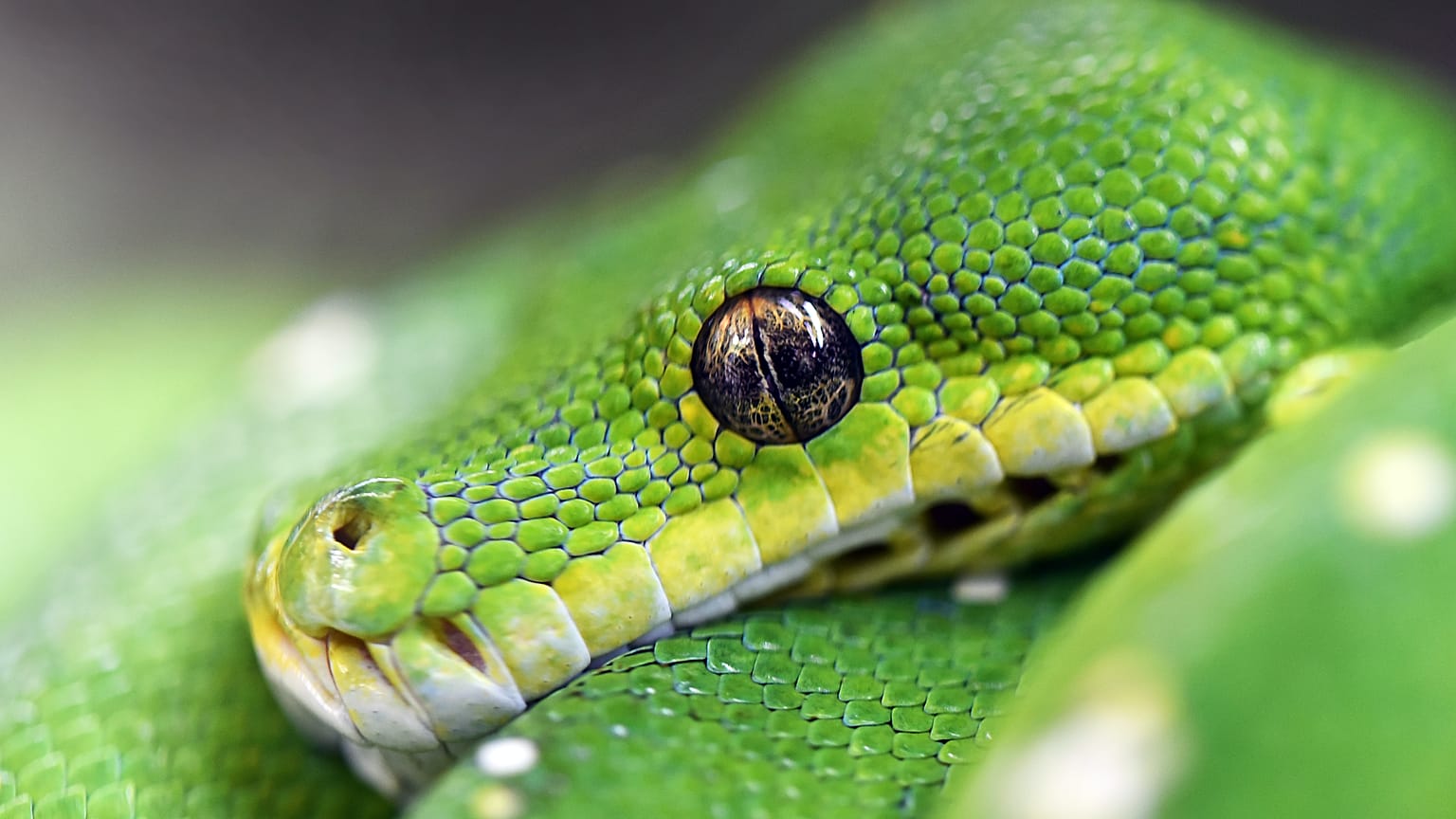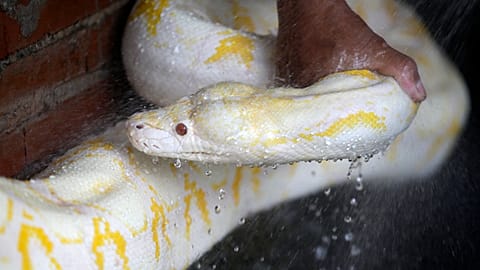The Indian species bears an uncanny resemblance to one of the characters. But which one - Hagrid, Voldemort, Malfoy?
A new species of pit green pit viper with unique stripes and colouration patterns has been discovered by scientists in India. Expedition lead Dr. Zeeshan Mirza of the National Centre for Biological Sciences has named the snake ‘Trimeresurus salazar’, after fictional character Salazar Slytherin in the Harry Potter books.
While pit vipers are widely distributed across east and southeast Asia, this was the first with a unique orange to reddish stripe on the head and body. There are 48 Trimeresurus species already in existence, which are described as both “charismatic” and “venomous” serpents. This is now the second species discovered over the course of the Indian expedition, reflecting on the poor nature of biodiversity documentation across north-eastern India.
Dr. Zeeshan Mirza shares his concerns about biodiversity in the area being under threat.
“Future dedicated surveys conducted across northeastern India will help document biodiversity, which is under threat from numerous development activities that include road widening, agriculture, and hydro-electric projects,” he says.
The expedition took place in Arunachal Pradesh, part of the Himalayan biodiversity hotspot.
How many animals are named after fictional characters?
Naming animals after both celebrities and fictional characters has become a growing trend in recent years. In 2019, a new species of beetle was named after the young activist Greta Thunberg, to honour her efforts to raise awareness around climate issues.
The ‘Nelloptodes gretae’ is in good company at the Natural History Museum in London, UK, next to another species of Ptiliidae beetle named in recognition of environmentalist David Attenborough.
As far as Harry Potter characters go, the ‘Trimeresurus salazar’ is not the first species whose name takes inspiration from the wizarding world. In 2017 a newly discovered wasp was named ‘Lusius malfoyi’ in New Zealand and a new spider species was called the ‘Eriovixia gryffindori’ in 2016 due to its undeniable resemblance to the Hogwarts sorting hat.


















